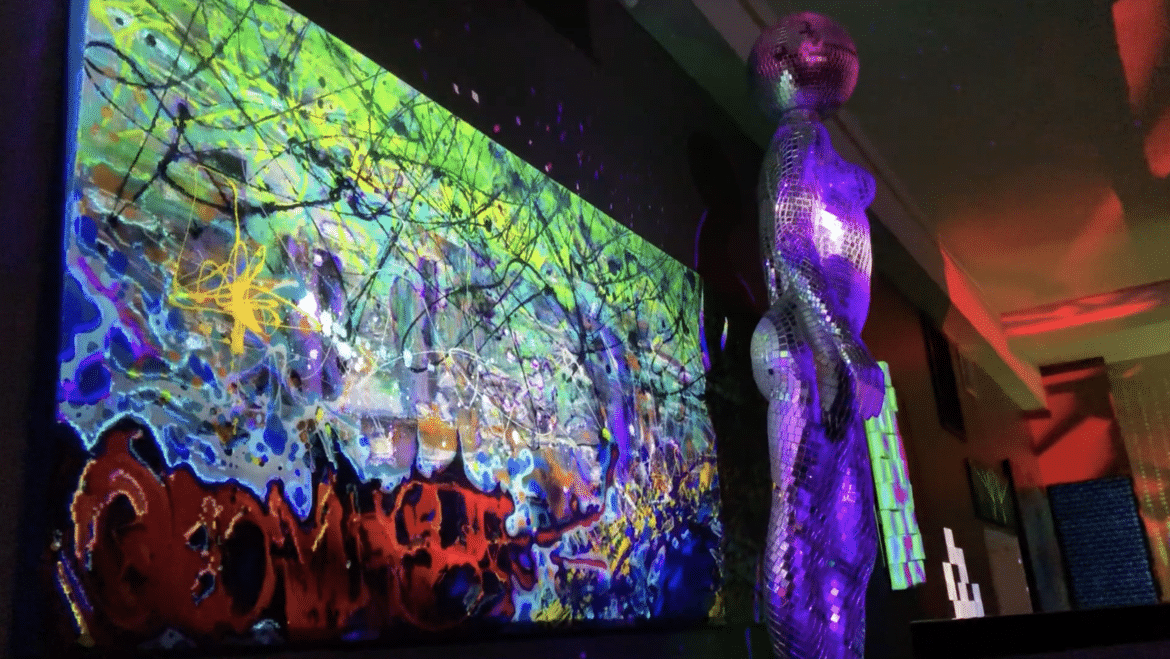Lightform power-user and creative force behind D4, Ryan McCoy is known for his large-scale digital installations and mind-altering projections, using Lightform as a medium to capture audiences and showcase his elaborate creations ranging from progressive social movements to psychedelic-induced artwork. From Virtual Burning Man live streams to multi-story renegade political protest projections, read our Lightform interview with Ryan McCoy to discover the fire behind his artistry and evolutionary journey with projection mapping.
1. What is D4, what type of work do you focus on, and how did you develop an interest in projection mapping?
While my background is in graphic design and large format printing, I’ve always had an interest in video editing and animation which I dabbled with on the side. YouTube provided a good source of large-scale professional video mapping that was mind-blowing, but I never thought the production tools would be affordable or easy to learn. Summer of 2018, I discovered a video mapping system that was still in pre-production and was offering a great discount for pre-order customers. With no hesitation, I placed my order and received my Lightform LFC in early 2019. All the dreamy thoughts were finally beginning to manifest. It didn’t take long before a mobile setup was ready for a renegade style projection. There were already a couple of Lightform video promotions showcasing this style and living in St. Louis, MO, [where] there are plenty of spots to bomb some photons. Lightform was the spark for a newly found creative outlet that has become D4. I have since put my focus on expanding my software knowledge for live and interactive projections.
2. Why is projection mapping important to you? Do you think it has a broader importance to society?
3. What has been your favorite project to date?
My St. Louis network has provided the opportunity to set up immersive visuals at a newly opened event space called IMRSD. It’s a creative space located on Cherokee Street, which is a popular district for artists of all types to showcase expressive talents. It’s my favorite place to test new ideas as I push the boundaries deeper into the realm of immersive art. The last event held there was the weekend before the covid lockdown. The news about covid was just beginning to buzz in every conversation so I decided to create a visual theme using virus graphics to light the walls. Little did I know, those would be the last visuals in the space for a very long time.
4. What is the craziest object or scene you have projection mapped?
5. Describe your projection mapping creative process. How do you choose your scene? What is your thought process behind identifying elements to map?
Learn more about Ryan McCoy and find his Lightform projection mapping projects on Facebook, or follow our blog for more exclusive interviews and Lightform user examples. Interested in having your Lightform projection mapping content featured? Tag us in your creations with #lightformcreations for an opportunity to have your projects shown on our social media!
Note:
As of August 12th, 2022, Lightform is no longer in business and is no longer providing technical support for the product. Please refer to the Lightform Guide and FAQ for self-help resources.
